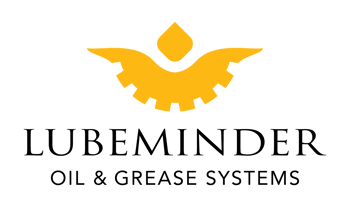
The Lubeminder learning center is your one-stop-shop for all information pertaining to oil & grease systems for all heavy-machinery applications. From our video library and blog resources to how-to and installation guides, this page provides detailed information and answers some of the most common questions we hear.
Lubeminder Oil & Grease Systems provides today's leading manufacturers with revolutionary products that extend the life of any piece of capital equipment. Our manufacturing process includes full-service ideation, design, prototyping, testing, and mass production. With any inquiries, to request a sample, or if you have a question that isn't answered below, contact us and a member of our talented team will be happy to assist.
Common FAQ
-
Why is it necessary to oil my chains and sprockets?
You should consistently lubricate your chain drives to resist friction and wear between moving parts and eliminate daily maintenance of chains and sprockets. Less resistance, means greater fuel economy. Chain breakage only happens when you are operating which can dramatically decrease productivity and operational profits.
-
How do chains fail?
Dust and sand stick to wet oils and greases, forming an abrasive paste. This abrasive paste worsens wear on chains, bearings, gears, hydraulic cylinders, and anything else it touches. Fertilizers act as corrosive agents. Heavy loads cause pressure that may not have been anticipated when the farmer made his lubricant choice, resulting in runout of lubricant where it’s needed most. Heat also causes runout when lubricants aren’t viscous enough, resulting in metal-on-metal contact. Water destroys everything it touches over time, even as it nourishes the crops we need to survive. Even more destructive than water are the plant juices that end up on moving parts as equipment passes over crops—nothing will contaminate lubricants faster.
-
How can an automatic oiler increase the life of your chains and sprockets?
The automatic oiler applies oil when the chain is warm and running. This is the best time to apply lubricant because you get the proper penetration. Consistent oiling minimizes metal-to-metal contact and provides cooling. Oil pumped to a brush located next to the chain maximizes the amount of debris cleaned off the chain while it disperses the oil to the pin bushing joint to help eliminate chain stretch.
-
What does an automatic oiler kit contain?
An oiler kit has all the parts needed to install on round balers, combines, mower-conditioners, shredder attachments and other hydraulic-activated sprocket-chain equipment. Even the drill bit to drill the correctly-sized holes comes in the kit. All you add is your own tools. You also need to purchase two quarts of the appropriate SAE chain oil for your conditions. (See section on recommended oils.)
-
What type of oil should you use for your automatic oiler?
The type of oil is as important as the method of application. Most chain manufacturers recommend a good grade of clean petroleum chain oil without additives. Additives generally leave a varnish or gum residue which prevents oil from penetrating the chain joints. The highest viscosity oils flow best between the chain link plates, filling the pin-bushing areas, providing the best wear life. The following table identifies lubricant viscosity recommended for various temperatures.
20-40°F SAE20 40-100°F SAE30 100-120°F SAE40 120-140°F SAE50
-
How does an automatic oiler cycle?
An automatic oiler cycles by tying into any double-acting hydraulic cylinder on your equipment. For example, on a round baler, use the cylinder which opens and closes the tailgate. On a mower-conditioner, use the cylinder which raises and lowers the cutting head. On a combine, you would use the cylinder which swings the unloader auger back and forth.
-
How long does a full reservoir on an automatic oiler last?
-
Why isn't my LubeMinder pump working?
Failure to prime the LubeMinder pump before filling the reservoir is the most common cause of pump problems. To prime the pump, pour in a small amount of oil to set in the pump; allowing air bubbles to escape out of the system. Dumping in all the oil right away is too heavy for air to escape and will lock the pump. Check out our YouTube video for instructions.
How to Pick Progressive Distributor Blocks for Your Lubrication System
Common Lubrication System Issues & Fixes
Auto Greasers: Boost Productivity, Ditch the Grease Gun
Custom Automatic Oilers and Grease Bank Systems for Farm Equipment
Progressive Systems: What to Know
QUESTIONS? START HERE


%20(1)-1-1.png?width=480&height=381&name=Slice%202%20(1)%20(1)-1-1.png)
-png%201.png?width=444&height=381&name=preview%20(6)-png%201.png)
.png?width=349&height=404&name=medium%201%20(4).png)
.png?width=349&height=404&name=Slice%203%20(22).png)
-png%201%20(1).png?width=366&height=359&name=preview%20(8)-png%201%20(1).png)


